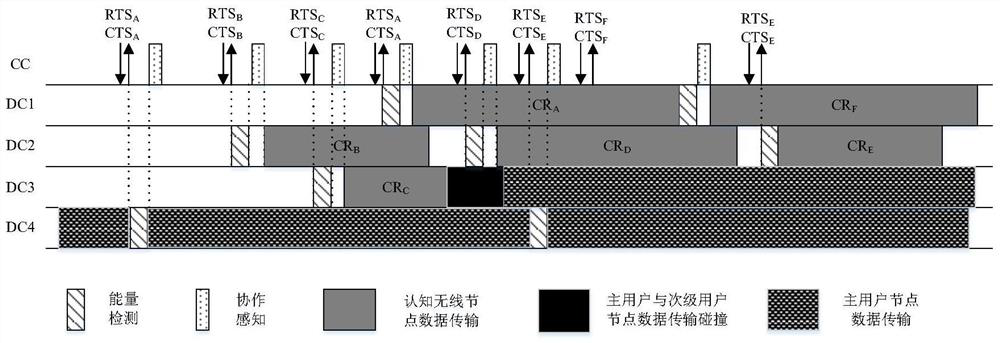A Distributed Access Control Method Applicable to Cognitive Wireless Networks
A cognitive wireless network and access control technology, applied in the field of communication, can solve the problems of not being able to better adapt to the dynamic occupancy of the data channel by the main user, hiding the communication interference of the main user, and the failure of the data channel reservation, so as to improve the overall data Effects of transmission throughput and delivery rate, improvement of detection accuracy, and reduction of time interval
- Summary
- Abstract
- Description
- Claims
- Application Information
AI Technical Summary
Problems solved by technology
Method used
Image
Examples
Embodiment
[0058] In order to compare the performance of the existing cognitive wireless network access control mechanisms based on the perception-reservation mode and the non-dedicated control channel mode, the following will first briefly introduce the two existing cognitive wireless network access control mechanisms. Then, based on NS3 network simulation software, the simulation performance is compared and analyzed.
[0059] Cognitive wireless network access control mechanism based on perception-reservation mode
[0060] like Figure 6As shown, the access control mechanism based on the perception-reservation mode divides the dedicated control channel and all data channels of the cognitive wireless network synchronously in the time domain into multiple superframes (that is, Superframes) of equal time length. At the beginning of each superframe, all cognitive nodes will first perform local energy detection and cooperative sensing based on busy signal transmission for all data channels,...
PUM
 Login to View More
Login to View More Abstract
Description
Claims
Application Information
 Login to View More
Login to View More - R&D
- Intellectual Property
- Life Sciences
- Materials
- Tech Scout
- Unparalleled Data Quality
- Higher Quality Content
- 60% Fewer Hallucinations
Browse by: Latest US Patents, China's latest patents, Technical Efficacy Thesaurus, Application Domain, Technology Topic, Popular Technical Reports.
© 2025 PatSnap. All rights reserved.Legal|Privacy policy|Modern Slavery Act Transparency Statement|Sitemap|About US| Contact US: help@patsnap.com



